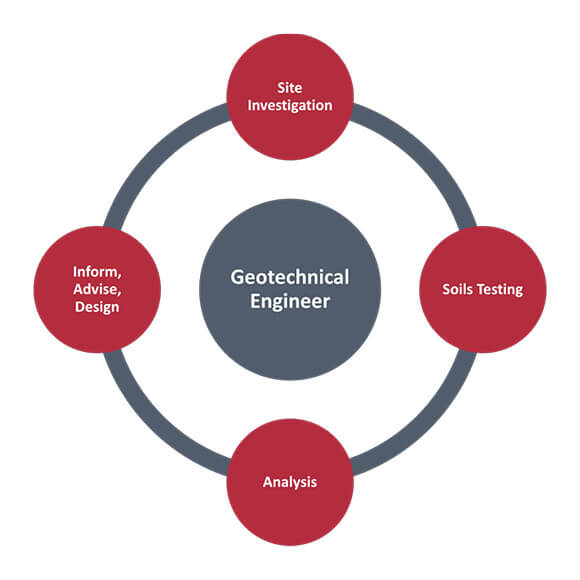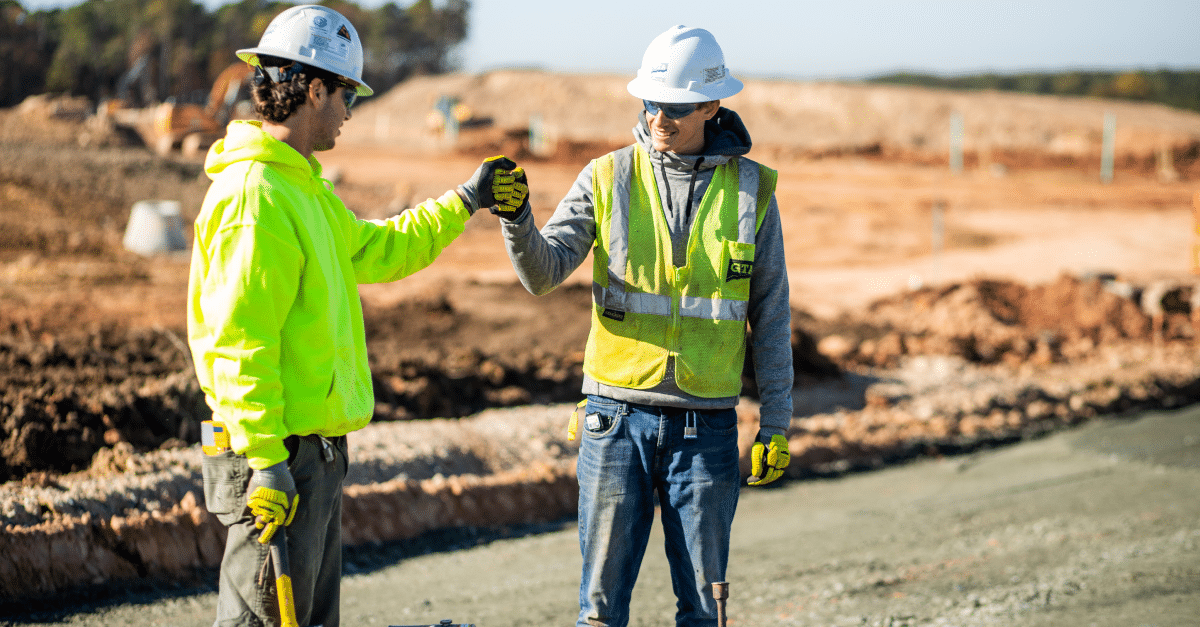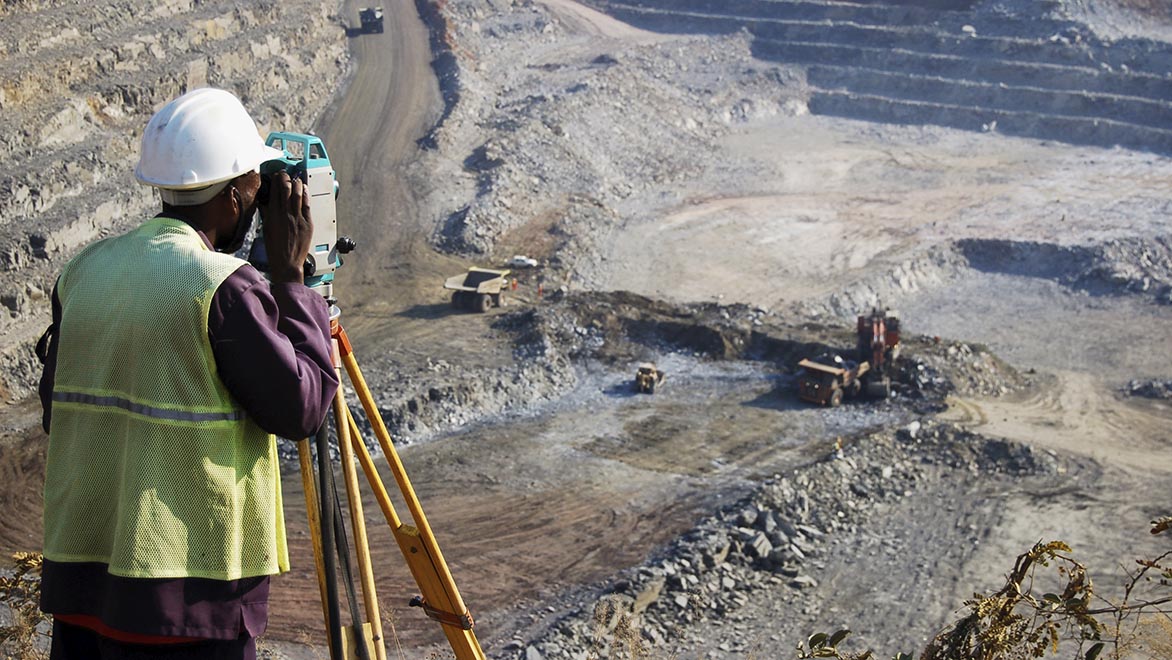8 Easy Facts About Geotechnical Engineering For Construction Projects Shown
8 Easy Facts About Geotechnical Engineering For Construction Projects Shown
Blog Article
The smart Trick of Geotechnical Engineering For Construction Projects That Nobody is Discussing
Table of ContentsThe Only Guide to Geotechnical Engineering For Construction ProjectsThe Best Guide To Geotechnical Engineering For Construction ProjectsSome Known Details About Geotechnical Engineering For Construction Projects Geotechnical Engineering For Construction Projects for DummiesGeotechnical Engineering For Construction Projects - An OverviewAn Unbiased View of Geotechnical Engineering For Construction ProjectsSome Known Details About Geotechnical Engineering For Construction Projects
Principles and Method of Ground Renovation. Ground Renovation Principles And Applications In Asia. Layout analysis in rock auto mechanics.Cengage Understanding, Stamford, 666 p. Atkinson, J., 2007. The technicians of dirts and structures. The Observational Method in ground design concepts and applications.
How Geotechnical Engineering For Construction Projects can Save You Time, Stress, and Money.
Laboratory and area testing plays an important function in this procedure. By drawing out examples from the planet's subsurface and applying a suite of examinations, geotechnical designers can anticipate the practices of dirt layers and examine their viability for different building and construction endeavours. The significance of geotechnical design in civil engineering can not be overstated, attributable to numerous elements: The preliminary step in any kind of geotechnical research study involves identifying the dirt type at the building website.
The foundation acts as the bedrock of any type of construction task. Selecting the ideal structure kind is a choice that pivots on the extensive analysis provided by geotechnical engineering.

Geotechnical site examination is a crucial action in the preparation and execution of any type of construction project. It involves the collection and analysis of data connected to the physical homes of dirt and rock under a suggested construction site. This info is essential for the layout and building and construction of risk-free, steady, and lasting frameworks.
Excitement About Geotechnical Engineering For Construction Projects
, additionally known as subsurface exploration, includes a collection of tasks aimed at figuring out the dirt, rock, and groundwater problems at a building site. The main purposes are to determine possible geotechnical hazards, examine the design properties of subsurface materials, and provide recommendations for the style and building and construction of structures, keeping wall surfaces, and various other frameworks.
The workdesk research study aids in recognizing possible geotechnical problems and preparing the subsequent fieldwork. This involves observing the topography, drainage patterns, existing frameworks, plants, and any type of indications of instability or disintegration.
The Definitive Guide to Geotechnical Engineering For Construction Projects
Shallow examination pits are excavated to straight observe and sample the dirt and rock. This approach is valuable for studying the top layers of the subsurface and determining near-surface risks. Non-invasive geophysical approaches, such as seismic refraction, ground-penetrating radar (GPR), and electrical resistivity tomography (ERT), are used to map subsurface problems and discover abnormalities.
Dirt and rock examples collected during the field examination are subjected to laboratory testing to determine their physical and mechanical homes. These examinations offer vital information for geotechnical evaluation and layout.
The primary benefit of geotechnical site investigation is making sure the safety and security and security of structures. By understanding the subsurface conditions, engineers can develop foundations and various other architectural aspects that can hold up against the tons and ecological forces they will undergo. This decreases the threat of negotiation, decrease, and architectural failing.
The Greatest Guide To Geotechnical Engineering For Construction Projects
For example, understanding soil qualities can guide the selection of excavation strategies, dewatering techniques, and ground improvement procedures. This guarantees reliable and risk-free construction techniques. Geotechnical site examinations are commonly needed by constructing codes and policies. Abiding by these needs guarantees conformity with legal and security requirements, staying clear of possible lawful responsibilities and project hold-ups.
This info is invaluable Check This Out for job supervisors, designers, and contractors in establishing realistic timetables, budget plans, and backup strategies. Geotechnical Engineering for Construction Projects. Skyscraper in a Coastal AreaIn a coastal city, a high-rise household building was intended on a site with presumed loose sand down payments and a high water table. A detailed geotechnical investigation, including borehole boring, CPT, and geophysical studies, was conducted
How Geotechnical Engineering For Construction Projects can Save You Time, Stress, and Money.
Based upon these searchings for, the structure style was customized to include deep pile structures prolonging right into secure strata, and ground enhancement techniques, such as vibro-compaction, were applied to mitigate liquefaction dangers. This proactive method guaranteed the safety and security of the structure while avoiding expensive post-construction remediation. Framework Advancement on a Sloping TerrainA major infrastructure job, including the building of a highway and bridges, was planned on a sloping surface with steep inclines.

The Leaning Tower of Pisa (Italy), a legendary building marvel, is well known for its unexpected tilt from significant geotechnical issues. The tower's foundation was improperly designed to take care of the soft, unsteady soil under it, resulting in irregular settlement and its distinct lean. Our world is dotted with excellent infrastructure projectsfrom looming skyscrapers to sprawling bridgesall standing testimony to the development of the numerous building equipment and approaches available.
Geotechnical design is a specialized area within civil design that concentrates on researching the habits of planet materials. This branch dives deep into the groundinvestigating just how the soil, rock, and groundwater at a building and construction site can influenceand be influenced bythe facilities that we erect on and into them. Prior to a single block is laid or a concrete structure poured, geotechnical engineers probe into the earthgathering vital information about the site's dirt make-up, Full Report rock structure, and groundwater levels.
How Geotechnical Engineering For Construction Projects can Save You Time, Stress, and Money.

is a tool used to evaluate the honesty and load-bearing ability of heaps throughout installation, leveraging the principle of wave proliferation. It enhances construction performance by providing real-time examinations, therefore ensuring safe and reliable pile foundations. One of the practical applications of geotechnical engineering includes making a decision and carrying out the appropriate approaches for structure building and construction.
Load driving stands for even more than the plain act of placing architectural elements into the ground. On the other hand, it is a very carefully managed process of moving a framework's lots past the much less steady soil layers closer to the surfacedown to the more substantial strata that exist under. When it comes to heap driving, consider just how geotechnical designers skillfully use this technique to uniformly Recommended Reading distribute the framework's weight.
Report this page